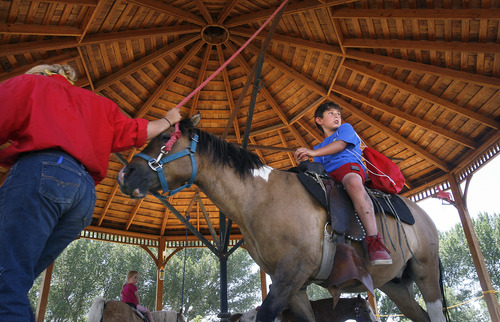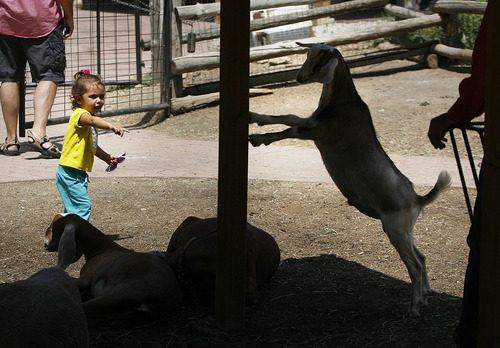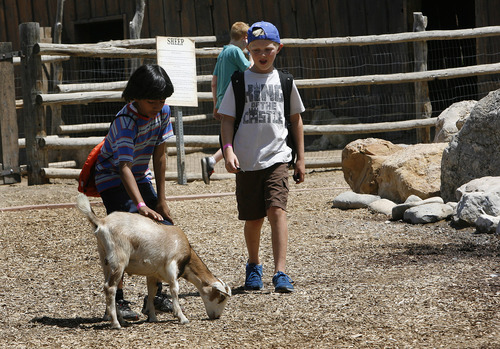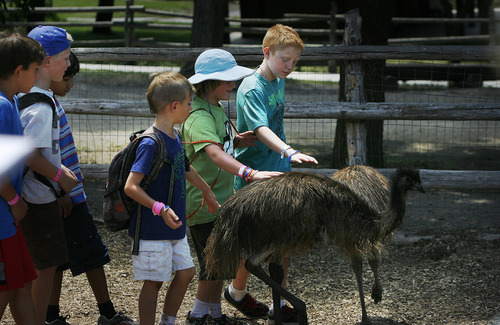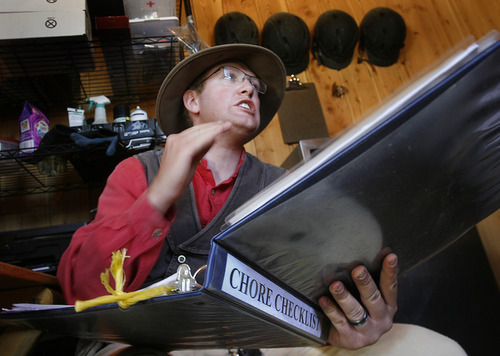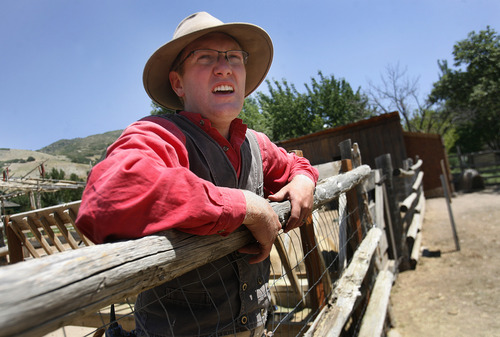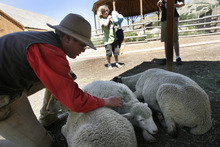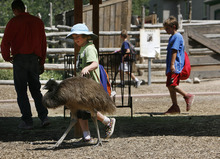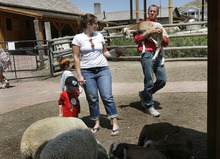This is an archived article that was published on sltrib.com in 2013, and information in the article may be outdated. It is provided only for personal research purposes and may not be reprinted.
An official warning letter from the U.S. Department of Agriculture in June followed a pair of negative veterinary inspection reports in April and May, but officials at This Is the Place Heritage Park say they are confident things are now on the right track.
"Every single thing they cited has been remedied," spokeswoman Tresha Kramer said Thursday. "I'm very confident things will go well from here."
Under the federal Animal Welfare Act, the USDA is charged with inspecting facilities like the park's petting zoo, which falls under the same set of regulations that apply to nearby Hogle Zoo. Judy Davis, a veterinary inspector for the federal Animal and Plant Heath Inspection Service (APHIS), reported a litany of violations in April in May.
In April, she reported sick or ailing animals that were not receiving timely veterinary care. She also noted problems with their living quarters, including buildup of manure and standing water. In May, she reported many of those conditions persisted. One lamb had died.
The reports also said the facility's record keeping was inadequate, particularly in keeping track of animal acquisitions and vaccinations.
Davis was not available for comment, but Tanya Espinosa, a spokeswoman for APHIS, said the warning letter should make the park aware that another inspection could be on the way. If such an inspection were to result in a negative report, the park could face administrative sanctions through the USDA's Office of General Counsel. Penalties could include fines, probation or license revocation.
Although the park receives $800,000 annually in state funding, it is operated independently by the This Is the Place Foundation and its board of directors, which raises the remainder of its $4 million annual operating budget.
In the wake of the April and May reports, the park has revamped its policies, procedures and practices, Kramer said. Beyond that, the facility has reduced by about half the number of animals in its care.
There are now 22 goats, sheep, pigs, rabbits, and cows that fall under the USDA guidelines. The park's horses and emus are not regulated through the APHIS program.
Alex Stromberg, the park's livery manager, said he now inspects each animal every day. If there is any problem, he says, he contacts a veterinarian the same day.
"My responsibility is the welfare of the animals and the safety of the people," he said.
Stromberg credited Davis' reports and suggestions with the improvement of animal welfare at the park. He pointed to new procedures, record keeping and improvements in animal living quarters.
Until this spring, the park had a good record, Kramer said. But a "confluence of factors" led to problems, she conceded. Spring can be a muddy time of year at the park, the baby animal season brings flocks of children who want to hold the animals, and the park's attendance was up a whopping 40 percent.
The facility's full-time staff of 28 is augmented by about 120 seasonal employees, who aren't trained in animal husbandry.
After the April and May APHIS reports, park officials took a sobering look at the operation and assigned more people to look after the animals, Kramer said.
She credited Stromberg with overseeing the improvements.
"The long-term remedy is the training of employees," she said. "It comes down to accountability and ongoing diligence."





